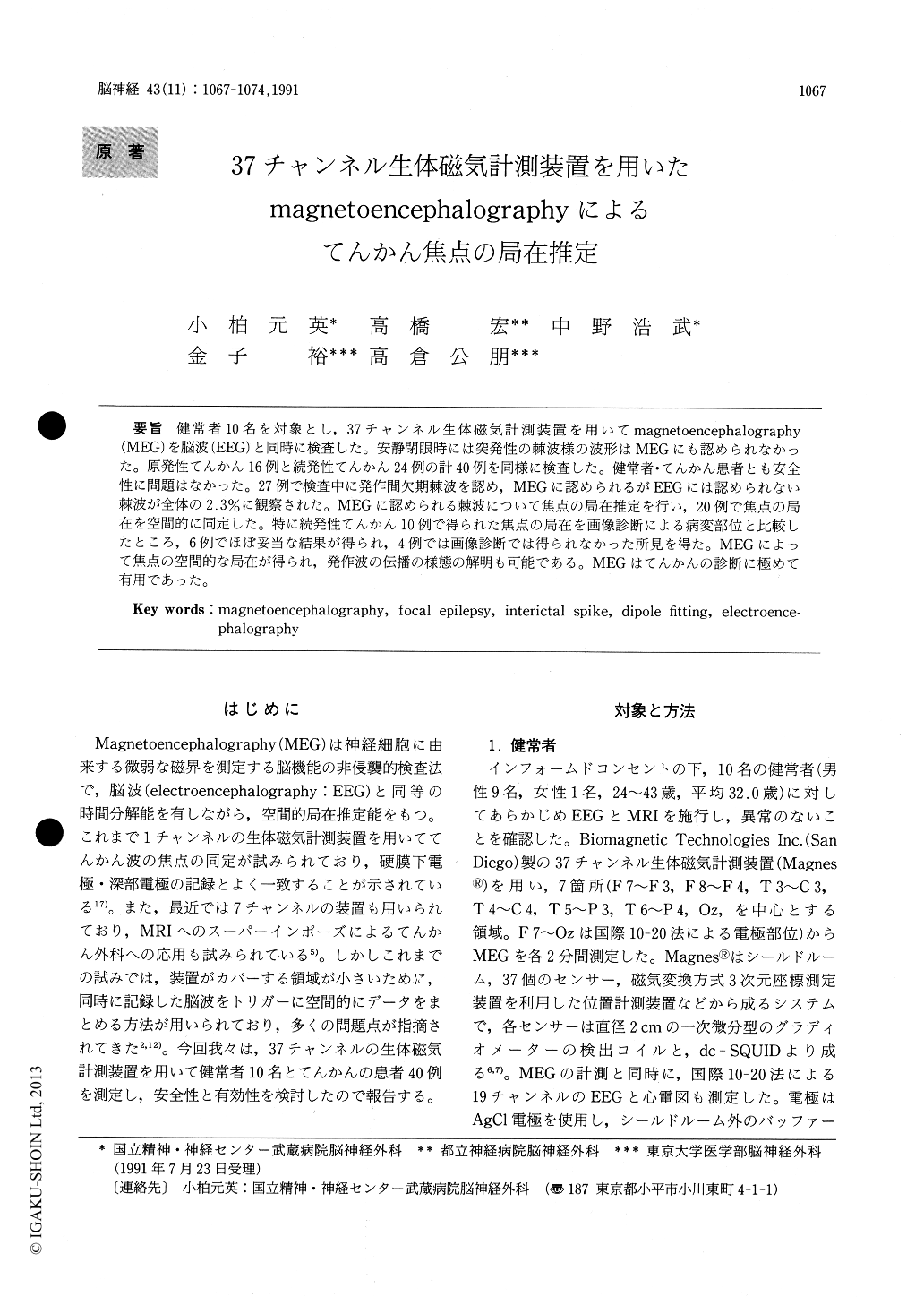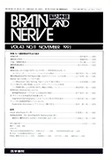Japanese
English
- 有料閲覧
- Abstract 文献概要
- 1ページ目 Look Inside
健常者10名を対象とし,37チャンネル生体磁気計測装置を用いてmagnetoencephalography(MEG)を脳波(EEG)と同時に検査した。安静閉眼時には突発性の棘波様の波形はMEGにも認められなかった。原発性てんかん16例と続発性てんかん24例の計40例を同様に検査した。健常者・てんかん患者とも安全性に問題はなかった。27例で検査中に発作間欠期棘波を認め,MEGに認められるがEEGには認められない棘波が全体の2.3%に観察された。MEGに認められる棘波について焦点の局在推定を行い,20例で焦点の局在を空間的に同定した。特に続発性てんかん10例で得られた焦点の局在を画像診断による病変部位と比較したところ,6例でほぼ妥当な結果が得られ,4例では画像診断では得られなかった所見を得た。MEGによって焦点の空間的な局在が得られ,発作波の伝播の様態の解明も可能である。MEGはてんかんの診断に極めて有用であった。
The magnetoencephalography (MEG) and elec-troencephalography (EEG) were recorded simulta-neously from 10 normal subjects using a 37-channel biomagnetometer. No paroxysmal spikelike waveform was observed in MEG at rest with eyes closed. The MEG and EEG were recorded also from 16 patients with primary epilepsy and 24 patients with secondary epilepsy. The examination proved to be safe for both normal subjects and patients with epilepsy. Interictal spikes were observed in 27 cases during the examination. The percentage of spikes identified in MEG but not in EEG was found to be 2. 3% of all spikes. The foci of the spikes identified in MEG were localized and determined in 20 cases. In 10 patients with secondary epilepsy, the localization of the foci were compared with the lesion demon-strated by magnetic resonance imaging (MRI) or computerized tomography (CT) and with the findings of EEG. In 6 cases, the foci by MEG were consistent. In the 4 cases where the MEG foci did not correspond to the MRI or CT findings, MEG foci were supported by the findings of EEG. MEG allows three-dimensional localization and enables us to elucidate the propagation of paroxysms. MEG was very useful in diagnosing epilepsy.

Copyright © 1991, Igaku-Shoin Ltd. All rights reserved.


